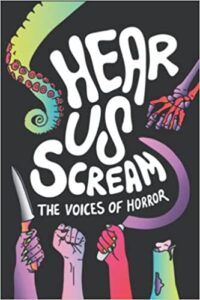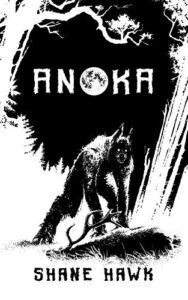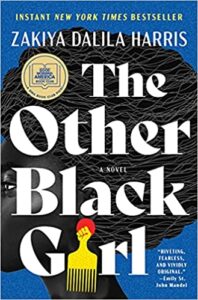Hear Us Scream: The Voices of Horror edited by Catherine Benstead, S.C. Parris, and Violet Burns
Hear Us Scream, 2021
ISBN: 9780645235500
Available: Hardcover, paperback, Kindle edition ( Bookshop.org | Amazon.com )
Vivid and intimate, these nonfiction reflections examine how and why folks find homes in the horror genre.
The women and nonbinary contributors’ offer personal horror journeys that blend and balance scholarly insights with intensely personal revelations for a unique and powerful reading experience. Despite considerable diversity in contributors’ backgrounds, some common threads emerge in the essays. Authors address themes like life lessons from horror’s surviving characters; horror as a place of self- recognition, community, and discovery; first experiences with horror; the connection between histories of trauma and horror enthusiasm; and the (mis)representations of marginalized identities. The result of the converging themes from distinct perspectives delivers a smart celebration that find pleasure and critical engagement with the genre. The inclusive potential of horror is centered, while raising incisive questions about future directions, and the pathways presented reflect the dynamic value of horror’s diverse voices. Horror lovers will find an enthusiastic appreciation of horror’s many worlds, interesting entry points, and room for emerging conversations. Much like the genre itself, I suspect this book will feel like home to many readers, who recognize and revere similar moments and remembrances.
Hear Us Scream is a welcome addition that will find enthusiastic readers across the community of horror lovers. Both horror content creators and fans will find much to enjoy and relate to in this empowering set of reflections about all types of horror, from B-movies to mainstream features, and more. Some individual essays include trigger warnings for a range of topics, and complex topics are handled with candor and care. Libraries with strong horror collections and pop culture sections will benefit from adding this title. Recommended.
Reviewed by E.F. Schraeder







Follow Us!